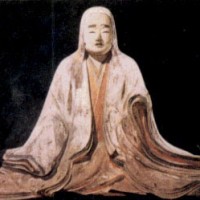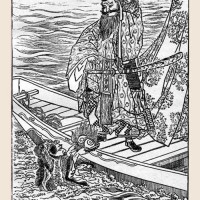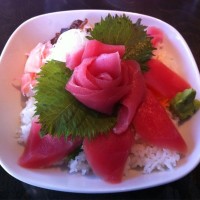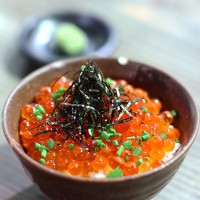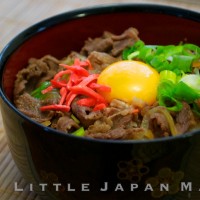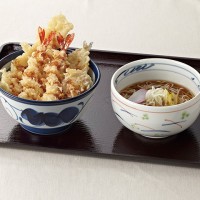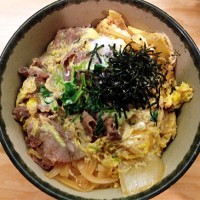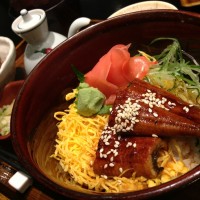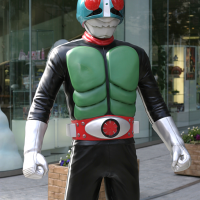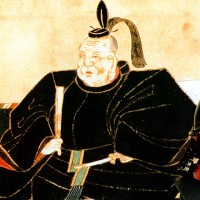blog
Friday: Kojiki (「乞食」ではなく『古事記』ですヨ!!) #25 – 2/2
08/09/2015 blog
Delivery of Toyotamabime (Tamayoribime – Toyotamabime’s sister) Although Toyotamabime (Yahiro Wani) was angry with Hoori, she still loved and missed him. Her sister called Tamayoshibime was in charge of raising her child (Ukayafukiaezu-no Mikoto – Father of the First Emperor, Jimmu), so Toyotamabime asked her sister to do her favor – Giving Hoori-no Mikoto a poem to praise him and tell him she still loved him and missed him so much. Hoori, on the other hand, still loved her and missed her too, so he wrote a poem back to her, saying, “I will never forget about you, dear.” By the way, Hoori-no Mikoto lived in Takachiho for another 580 …
Friday: Kojiki (「乞食」ではなく『古事記』ですヨ!!) #25 – 1/2
08/09/2015 blog
Delivery of Toyotamabime One day Toyotamabime came and visited Hoori-no Mikoto, saying, “I am expecting your child, whom I am about to give birth to. I came here to deliver your child because his father is the Heavenly God and he shouldn’t be born in the ocean.” At the seashore, she tried to build a special hut with cormorants’ feathers to have a baby. Before the hut was completely built, she felt strong contractions. Her labor pain was so severe that she had to get in the hut for delivery. Before her delivery, she gave her husband, Hoori-no Mikoto, a warning – “Women from other worlds are supposed to go …
Friday: Kojiki (「乞食」ではなく『古事記』ですヨ!!) #24 – 3/3
08/09/2015 blog
Shiomitsutama and Shiofurutama When Hoori-no Mikoto got back home, he did exactly what he was told by his father-in-law. Hoderi-no Mikoto got his fishing hook back again, but he became poorer and poorer as the Sea God told Hoori. At last, enraged Hoderi attacked his brother as expected. Now Hoori took out those two tide jewels called Shiomitsutama and Shiofurutama. First, he used Shiomitsutama to nearly drown his brother. Agonized Hoderi asked him for rescue and Hoori did him a favor with Shiofurutama. He did it for several times, driving his brother crazy! Finally, Hoderi succumbed to his brother with his head on the ground, saying, “I am going to …
Friday: Kojiki (「乞食」ではなく『古事記』ですヨ!!) #24 – 2/3
08/09/2015 blog
Shiomitsutama and Shiofurutama Watatsumi-no Ookami (the Sea God) gave his son-in-law important advice before his departure. When you ruturn this fishing hook to your brother, you will cast a spell on it by saying, “This is a fishing hook which makes you closed minded and which drives you crazy with anger. This will bring you poverty. This will keep you foolish.” The Sea God also said, “Give it to him with your hands behind your back. If he crops dry paddies at a hight, you cultivate wet paddies at lower places. If he does at lower places, you do at a hight. Do exactly opposite to what he does. Since water …
Friday: Kojiki (「乞食」ではなく『古事記』ですヨ!!) #24 – 1/3
08/09/2015 blog
Shiomitsutama and Shiofurutama One day Hoori-no Mikoto took a big sigh in the Sea Palace, where he had stayed for as long as 3 years. All of sudden, he remembered why he was there – He lost his brother’s fishing hook and had to find it! Toyotamabime saw her husband so depressed that she told her father, the Sea God, what she saw. She said, “I have never seen him so depressed. Do you have any idea why?” The concerned father-in-law asked his son-in-law, “My daughter has been very worried about you after she saw you so depressed this morning. Please tell me the reason you came here in the first …
Thursday: Japanese Food
08/07/2015 blog
Tekkadon/Maguro Donburi (Tekka Donburi/Tekkadon) “Tekka” means “Tetsu (Iron)” + “Ka (Fire)” though its pronunciation changes when they are combined. Maguro (Tuna) looks like a burnt iron (red), which is where the name “Tekka” comes from. “Tekkadon” and “Sakedon (Salmon Donburi)” sometimes come with sushi rice (vinegard rice) depending on regions or sushi bars. However, it is sashimi, not sushi, on the regular rice, not on vinegared rice after all. (Regular Tekkadon) (A Variety of Tekkadon) (You can make one at home as long as you get sashimi!)
Thursday: Japanese Food
08/07/2015 blog
Unidon/Ikuradon (Ikura Donburi/ Ikuradon) (Ikura Donburi/Ikuradon) (Uni Ikura Donburi/ Uni Ikuradon) If you love sushi and go a sushi bar so often, you know how expensive ($$$$$) “Uni (Sea Urchin)” and “Ikura (salmon roe)” are! Usually you see “JIKA (Seasonal Price)” in menu at sushi bars in Japan. You have to be prepare to pay a small fortune if you order “Uni” or “Ikura.” There is another expensive menu at Japanese sushi bars called “Kazunoko (herring roe),” but I have never seen “Kazunoko Don(buri)” before. Definitely each one of them is a delicacy!! The rice in the bowl is NOT vinegared unlike sushi (“Sushi” originally means “Su (Vinegar) shi (govern)”). In …
Thursday: Japanese Food
08/07/2015 blog
Gyudon (Gyudon) “Gyu (Beef)” + “Don” = “Gyudon.” Seasoned and cooked beef is over the rice in the bowl this time. This is one of the Japanese traditional menus, but it became a huge hit when a franchise came to Japanese fast food market. (“Yoshinoya” is the most popular franchise in “Gyudon” market in Japan.) (Ajinomoto created frozen Gyudon.) Since Yoshinoya established its “Gyudon” franchise, most Japanese think of “Gyudon” as “Gyudon from Yoshinoya!” Also, “Gyudon” is the food when you are in a hurry or to go cheap. Traditionally, the Japanese cooked “Gyudon” at home. I don’t know if it is still the case in Japan now, though… *https://en.wikipedia.org/wiki/Gy%C5%ABdon
Thursday: Japanese Food
08/07/2015 blog
Tendon/Tempura (Tendon and Noodle Combo) (Tendon “To Go” – Fast Food!) If you are here and reading this blog, you know a lot of Japanese food. Or, Japanese food is your favorite and you go to Japanese restaurants once in a while – maybe more often than going to restaurants which serve other countries’ cuisines. So, I assume you are familiar with the word – Tempra. Yes, mainly seafood is deepfried. “Shrimp Tempura” is most popular, no doubt! Now this deepfried shrimp and others are over the rice. That is called “Tendon.” The deepfried dish is served in many ways: (Tempura Teishoku or Combo menu) (Tempura Soba) (Tempura Udon) (Tenzaru …
Thursday: Japanese Food
08/07/2015 blog
Tanin Don(buri) (Tanin Donburi) Let’s review! As long as you see the word, “donburi,” that’s rice bowl, isn’t it? Now what does “tanin” mean? “Tanin” means “strangers.” In this case, the very strangers to each other are “beef (or some other kinds of meat)” and “eggs.” They are NOT related to each other, are they? That’s why it is called “Tanin Donburi.” Similar sauce used in “Oyako Donburi” is used when cooking “Tanin Donburi.” Just ingredients are different – They are strangers! Then, why do you cook “strangers” together? Kind of weird… See – in Japanese Kado (the art of flower arrangement) you are not supposed to mix up the …
Thursday: Japanese Food
08/07/2015 blog
Oyako Don(buri) (Oyako Donburi) This is the sequel menu of another kind of “Donburi.” OK. Now you know this is a rice bowl with something over the rice, don’t you? Yes, “Oyako” is over the rice. What, in the world, does “Oyako” mean? It means “parent” and “child” – chicken (parent) and eggs (child). Of course, not just that “oyako” is over the rice, but all other ingredients are along with “oyako.” (Basic Ingredients for Oyako Donburi) As stated in a column of “Unadon/Unagi Donburi,” chicken and eggs are boiled with other vegitables in special sauce and served with condiments different from those coming with Unadon/Unagi Donburi. Look at some …
Thursday: Japanese Food
08/07/2015 blog
Unagi Donburi/Unadon (Professionally Served Unadon/Unagi Donburi) When you see the sign which says “XXX Don” or “OOO Donburi,” you picture “XXX Rice Bowl” or “OOO Bowl” you can eat at Japanese restaurants or Japanese/Chinese fast food restaurants like Panda Express. Originally, “donburi” means “medium sized bowls” – think of a salad bowl with quite a depth. Usually, the Japanese serve rice in a deep bowl called donburi, over which you will see a lot of dishes – meat, eggs, fish, vegetables, and so on. Then, you call it “(whatever) Donburi.” So, today’s “whatever” is eels called “Unagi” in Japanese. That’s why it is called “Unagi Donburi” or “Unadon” in a …
Wednesday: Nihon-no Manga
08/06/2015 blog
Kamen Rider <Series> (The First Rider: After His Comeback) (The First 3 Riders) (A Big Franchise Over the Decades) “Kamen Rider” was originally written by Ishi(no)mori Shotaro, who is the author of “Cyborg 009” introduced last week, but later on the series became such a big franchise that Ishi(no)mori didn’t catch up with the popularity and he dropped the ball, which means all other characters and their episodes were written by other authors. It is said that Ishi(no)mori came up with the original Kamen, which means “Mask(ed),” Rider character from a grashopper or a locust. That’s why each rider’s mask always looks like a grashopper or locust no matter what …
Tuesday: Nihon-no Kotowaza
08/05/2015 blog
Omoni-wo Orosu (Tokugawa Ieyasu: https://en.wikipedia.org/wiki/Tokugawa_Ieyasu) [Vocaburary] Omoni: a heavy burden Orosu: unburden; be relieved of a burden; discharge a burden [Comment] No translation necessary for “Omoni-wo Orosu,” right? Look at the picture of Tokugawa Ieyasu (1543 – 1616) above. As you may know it, Ieyasu is the founder and first Shogun of Tokugawa Shogunate. Unlike his other counterparts – Oda Nobunaga (1534 – 1582) and Toyotomi Hideyoshi (1536 – 1598) – he came to the throne in his later life (He seized power at the age of 57!). His life tends to be depicted as “Patience.” Patience was everything in his life. Since he was a young boy, he was always with …
Tuesday: Nihon-no Kotowaza
08/05/2015 blog
U-no Mane-wo Suru Karasu (Cormorant) (Crow) [Vocaburary] U: a cormorant Mane-wo Suru: copy Karasu: a crow [Translation] People ruin themselves by trying to ape their betters.

